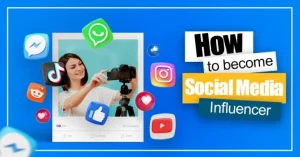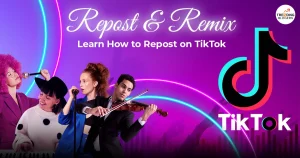In a world full of entertainment reels on Instagram or informative YouTube videos, people are bored of the same kind of content. Looking forward to some personal and unique experience and expertise, people are moving towards podcasts. YouTube podcasting has become the trend lately. From niche-oriented talks to the authentic voice of high-profile guests, the podcast is much more than just easy talk.
Though there are hundreds and thousands of podcasts already hustling, it is still in its budding phase with a large audience base. In 2023, there were approximately 464 million podcast listeners worldwide. This number is expected to continue growing, reaching 504.9 million by the end of 2024.
Not only is its audience base large, it has a wide appeal across age groups. In the US, 36% of listeners are 12-34 years old, 30% are 35-54 years old, and 34% are over 55 years old. Moreover, it has created a great market for advertisers, and in the US, podcasting ad revenue is projected to reach $4 billion in 2024, up from $2.3 billion in 2023.
All this data seems tempting and if you all want to leverage the opportunity. Podcasting is a low-cost business. You can start with just a few things. Here is how to can start a YouTube podcast.
How to Start a Podcast?
YouTube Podcast is a fantastic way to share your voice with the world. But where do you even begin? This comprehensive guide walks you through everything you need to launch a successful podcast, step-by-step.
1. Plan Your Podcast
Before starting a YouTube podcast, it’s important to make a strategy. This will guide your content creation and ensure your show resonates with your target audience. Here’s what to consider:
- Find Your Why
- Choose a Niche
- Pick a Podcast Name
- Select a Format
- Structure Your Episodes
- Podcast Frequency
2. Set Up Your Podcasting Equipment
You don’t need a professional studio to create a great podcast! Here’s some essential equipment to start a YouTube podcast:
Microphone: Choose a microphone with a cardioid polar pattern to minimize background noise. Consider USB microphones for beginners or XLR microphones for advanced setups with multiple guests. Popular choices include Samson Q2U, Blue Yeti, and Shure MV7.
Headphones: This ensures you can hear your audio clearly and adjust recording levels. Wired headphones are ideal for avoiding lag and the need for charging. Recommended options include Sennheiser 280 PRO and Audio Technica ATH-m20x.
Computer: You likely already own a computer or laptop that will work for podcasting. Popular choices include the HP Spectre x360 and Macbook Air.
Camera (Optional): If you’re recording video podcasts, invest in a camera. Consider a dedicated webcam or a DSLR for higher quality. Look at the Sony ZV-E10 or Panasonic HC-V770K for video cameras.
Phone: Many smartphones have high-quality cameras that can record in 4K resolution. Use them for budget podcasting with an external microphone.
Additional Equipment (Optional):
- Pop filter
- Audio interface
- Microphone stand
- Video lighting
- Soundproofing materials
For Multi-Person Podcasts:
Purchase additional microphones and headphones for each guest. An audio interface or mixer might be necessary to capture separate audio tracks for each participant.
3. Choose Podcast Recording and Editing Software
There’s a variety of free and paid podcast software available. Consider your needs and budget when making your choice. Here are a few options:
Recording Software:
- Riverside (Free & Paid plans)
- GarageBand (Free – Mac only)
- Adobe Audition (Paid – Mac & Windows)
- Audacity (Free – Mac, Windows, Linux)
- Zoom (Free & Paid – Mac, Windows, Linux)
Remote Recording Software:
- Zoom (Free & Paid – Mac, Windows, Linux)
- Skype (Free – Mac, Windows, Linux)
4. Prepare Your First Podcast Episodes
Before hitting the record, take time to prepare your content. This includes scheduling interviews, outlining episodes, and testing your equipment.
- Schedule Interviews
- Outline Episodes
- Test Your Equipment
5. Start Recording Your Podcast
Choose the recording setup that best suits your needs:
- In-Person Recording: Use a podcast mixer to connect equipment to your computer.
- Remote Recording: Use dedicated remote recording software like Riverside to make seamless recordings with guests in different locations.
- Hybrid Recording: Combine in-person and remote recording for a mix of guests.
6. Edit Your Podcast Recordings
Editing is essential for polishing your podcast and creating a professional sound. You can use various video and audio editing tools like Audioalter Software. Here are some key tasks:
- Remove Unwanted Sections
- Add Intros, Outros, and Music
- Fine-Tune Audio
- Add Visuals (for video podcasts)
- Merge Tracks and Export
- Create Promotional Clips
7. Create Brand Artwork for Your Podcast Cover
Your podcast cover art is the first thing listeners see. Design a visually appealing cover that reflects your podcast’s theme and attracts attention.
- Include Essential Information such as podcast name, logo, and branding colours that are clearly visible.
- Consider Your Target Audience
- Use Appropriate Dimensions
8. Publish Your Podcast Show
Once you’ve recorded and edited your episodes, it’s time to publish your podcast. Here’s a general process:
- Select a platform like Spotify for Podcasters, Buzzsprout, or Anchor to store your podcast content.
- Your podcast host will generate an RSS feed that you’ll need to submit to podcast directories.
- Distribute your podcast to popular platforms like Apple Podcasts, Spotify, Google Podcasts, and more.
- Share your podcast on social media, your website, and other relevant channels.
9. Promote and Monetize Your Podcast
Building an audience and generating revenue takes time and effort. Here are some strategies:
- Use relevant keywords in your podcast description, show notes, and titles to improve discoverability.
- Share your podcast on platforms like Instagram, Twitter, and Facebook.
- Collaborate with other podcasters to reach a wider audience.
- Build an email list to keep listeners updated about new episodes.
- Consider options like sponsorships, donations, merchandise, or affiliate marketing.
10. Assess Your Podcast’s Success
Track your podcast’s performance using analytics tools provided by your hosting platform. This will help you understand your audience, identify trends, and make data-driven decisions to improve your show.
The Bottom Line:
A successful YouTube podcast may take time and dedication, but it is worth it. With proper strategy, equipment, and the right tools, you can get started. It is not rocket science; anybody can do it; you just need to get started.
Also Read About: The Best Wireless Headphones For 2024




